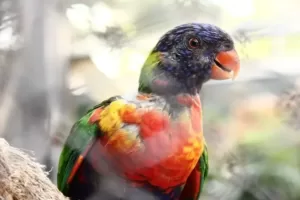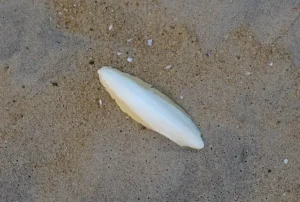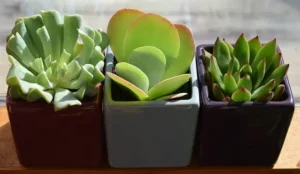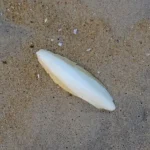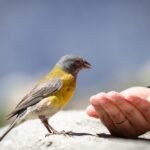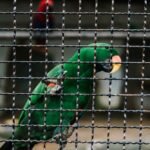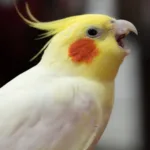It’s normal for parrots to shed some feathers every now and then. However, under certain circumstances, parrots may lose feathers in abnormal ways, such as due to injuries or feather plucking. This often makes parrot owners worry whether these feathers will grow back.
Parrots lose their feathers as part of their annual molting cycle, but they will grow them back naturally. Even if a parrot loses its feathers due to feather plucking or other unnatural reasons, they will eventually regrow, though it may be a longer process.
Quick Navigation
How Long Does It Take For Parrot Feathers To Grow Back?
The rate at which new feathers grow depends on a number of factors including the cause of feather loss. If the parrot has lost its feathers due to an injury, infection, or disease, the recovery will take much longer compared to the regrowth period after a regular molt.
Parrots can lose their feathers due to the following reasons:
- Stress
- Molting
- Feather mites
- Medical issues
- Feather plucking
If you’re worried that your parrot is not growing back its feathers, you should consult an avian vet to narrow down the possible causes.
How Long Does It Take For Feathers To Grow Back After Molting?
Molting is an annual exchange of feathers; old feathers fall out while new feathers start growing in their place simultaneously. However, feathers do not fall out all at once.
It typically occurs in a sequence, with the innermost layer of feathers shedding first, followed by the successive layers of feathers towards the outermost ones. As more and more feathers fall out, you can see the growth of white downy feathers on the skin.
It can take several weeks for the feathers to fully grow back. Depending on various factors, parrots can regrow molted feathers usually within 4-5 weeks. However, it must be noted that the length of a molting season varies between species of parrots.

Do Parrot Feathers Grow Back After Being Plucked?
According to Wiley Online Library, feathers can regrow periodically under normal physiological conditions and in response to injuries such as plucking.
So as long as the feather follicles are intact, new feathers will eventually grow. However, because the follicles have endured so much damage, it may take some time for the feathers to grow back fully.
How Long Does It Take For Plucked Feathers To Grow Back
As your parrot’s skin heals, it may not replace the lost feathers immediately. It will take time and care for the follicles to become active again. Following a proper care routine, the follicles may start regenerating feathers, but there are a few caveats.
The feathers should start to grow after 10-12 months given that the bird is no longer plucking its feathers and does not have any underlying medical issues. After the follicles have started regrowing feathers a complete recovery may still take time.
Do Parrot Feathers Grow Back After Being Clipped
When a parrot’s feathers are clipped, they do not grow back the same way as human hair. Feathers are made of dead cells and once they have reached their required length, the blood supply is closed off.
As stated by PLOS One, feathers cannot repair themselves or grow continuously from living basal tissue. They can only be replaced with new feathers. This means clipped feathers can grow back to their original length only after the next molt.
Why Are My Parrot’s Feathers Not Growing Back?
There could be several reasons why your parrot’s feathers are not growing back as expected. Factors such as diet, stress, medical condition and sometimes even preening habits may slow down this process.
Unresolved Feather Plucking
When feathers are damaged or plucked for a long time, it disrupts the natural feather regeneration process. The feather follicles may become damaged and unable to produce new feathers.
In order for the feathers to regrow again, the follicles need time to heal. After the parrot stops feather-plucking behaviors, it may take several months for the follicles to become active.
Skin Damage
Feather-damaging behaviors (FDB) are not limited to plucking. It can turn into self-mutilation where the parrot chews on its own skin after removing the feathers.
When a parrot plucks its feathers, the follicles may still be preserved and not permanently harmed. But in case of self-mutilation, the feathers follicles may be beyond repair and inhibit any new feathers from growing.
Health Issues
Underlying health issues can prevent a parrot’s feathers from regrowing properly. It is hard to determine one possible condition without a medical examination so it is best to visit your avian vet.
Improper Diet
Balanced nutrition is also crucial for the development of feathers. Without enough nutrients reaching the follicles, the feathers will not be able to gain proper shape and structure. Malnourishment can even lead to the development of dull and abnormal feathers.
How To Help My Parrot Grow Back Feathers?
In order to promote feather growth in parrots, you need to address the medical and environmental stressors that might be affecting their health. Along with this, you should also focus on helping improve the quality of feathers. Feather quality primarily improves during the growth phase, so it’s important to take utmost care of their feathers during this period.
Dietary Improvements
Diet is an important factor that impacts feather regrowth is nutrition. Fortunately, you have control over your parrot’s diet, so you can help them regrow its feathers by ensuring proper care.
Nutrition influences the growth of new feathers more than any other factor. When a parrot is regrowing feathers, it needs certain key nutrients in its diet for the feathers to form in proper order.
Feathers are mainly composed of keratin protein, so the demand for protein in the diet increases significantly when a parrot is molting. Protein is required for the formation of healthy and strong feathers.
Along with protein, providing a balanced diet rich in vitamins and minerals is essential for enhancing feather quality in parrots.
Vitamin A is also an important nutrient for healthy skin and feathers in parrots. A deficiency in vitamin A can lead to dry, brittle feathers and has been associated with feather plucking. Carrots, sweet potatoes, spinach, and kale are some good sources of vitamin A.
Adequate sleep
Growing new feathers is physically exhausting for parrots. It takes a lot of nutritional resources from their bodies which can enervate them.
During this time it is essential that your parrot gets enough sleep. Sleep plays an essential role in supporting feather growth by increasing blood flow to the follicles and providing the necessary nutrients to the developing feathers.
Natural Sunlight
The amount of sunlight (photoperiod) parrots receive is one of the factors that determine their molting patterns. So sufficient exposure to natural sunlight can ensure that they have a proper molt.
Also, sunlight helps parrots get their daily intake of vitamin D, which is one of the essential nutrients for promoting healthy feather growth.
Stress-Free Environment
Stress not only hinders the regrowth of feathers but it can be one of the biggest triggers for feather-damaging behaviors and excessive grooming.
Sometimes, when a bird is exposed to stress for long periods, it can show up on its feathers as stress bars. Stress may also lead to an overall poor quality of feathers.
So to make sure your parrot grows healthy and lustrous feathers, ensure that their environment is stress-free. Allow them time outside of the cage and give them enough socializing opportunities.
